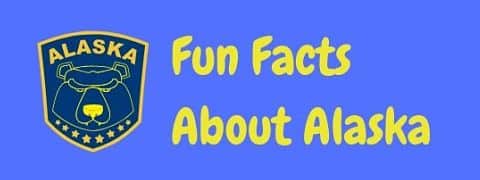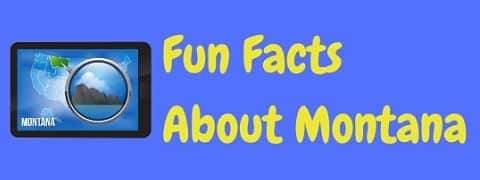Here is a fantastic collection of fun facts about Arizona. Even those who born and raised in the state may be surprised by some of these interesting facts.
Towering saguaro cacti, gigantic canyons and mesas, Wild West shootouts, the multicultural hubbub of Phoenix and Tucson: Arizona represents perhaps the quintessential state of the American Southwest. Here’s a hodgepodge of facts about this drop-dead-gorgeous corner of the U.S., nestled between Utah, Nevada, California, New Mexico, Colorado, and Mexico.

Numbers, Numbers, Numbers
Arizona is the sixth-largest U.S. state by area at just shy of 114,000 square miles. With a bit north of seven million residents, meanwhile, it’s the 14th most populous.
Populous Phoenix
Arizona’s state capital, Phoenix, is also its biggest city, hosting some 1.7 million people as of 2018. It also happens to be the only state capital in the U.S. with better than a million residents; the next-largest state capital is Austin, Texas, with a population of about 965,000. Arizona’s one of 17 U.S. states – a significant minority, in other words – whose capital doubles as the most populous city.
The next-biggest Arizona city, incidentally, is Tucson, with some 536,000 inhabitants.
Highs & Lows
Arizona’s highest point is 12,637-foot Mount Humphrey in the San Francisco Peaks, a mountain range on the Coconino Plateau north of Flagstaff that actually represents the eroded remnants of a big, extinct stratovolcano. The highest point outside the San Francisco Peaks is 11,403-foot Mount Baldy in the White Mountains of far eastern Arizona, which extend across the border into New Mexico.
The lowest point in the state, meanwhile, lies at a mere 72 feet where the Colorado River flows from Arizona into Sonora, Mexico.
Better than half of Arizona, however, stands at 4,000 feet of elevation or higher.
Physiographic Regions & Climate
Two major physiographic provinces compose Arizona: the Colorado Plateau in the north and the Basin-and-Range in the south. The Colorado Plateau is a high-elevation tableland with quite a harsh climate and Rocky Mountain ecological affinities, and remains sparsely populated; the Basin-and-Range is a lower-elevation realm of desert and semidesert basins and isolated mountain uplifts, and though there’s plenty of remote country it hosts Arizona’s biggest population centers.
In between the Colorado Plateau and Basin-and-Range, the so-called Transition Zone or Central Highlands cover the terrain tumbling down between the high Plateau and the hot deserts of the south.
Arizona’s Deserts
Three (and maybe four) of North America’s deserts extend into Arizona. The Great Basin Desert, the northernmost, edges into northern Arizona in the Colorado Plateau’s most arid reaches. The Mojave Desert is mostly in Nevada and California, but covers part of northwestern Arizona. Encompassing a much greater area is the Sonoran Desert, which occupies much of southern Arizona. Some geographers consider the dry grasslands of southeastern Arizona to be a part of yet another desert: the Chihuahuan, primarily located in southern New Mexico, West Texas, and adjoining Mexico.
The Grand Canyon’s Grandness
Despite plenty of popular opinion, the Grand Canyon isn’t the biggest canyon in the world; in fact, there are quite a few significantly deeper defiles, including several – such as Hells Canyon on the Oregon-Idaho border, Kings Canyon in the California Sierra Nevada, and Copper Canyon (Barranca del Cobre) in Mexico – in North America. But this 277-mile-long chasm along the Colorado River, the defining feature of the Colorado Plateau and the American Southwest in general, is still a globally superlative defile: up to 6,000 feet and 18 miles across at its broadest, and easily one of the most colorful and scenic canyons on Earth.
Nearly two billion years of geological history are encoded in the layered rocks of the Grand Canyon. Meanwhile, Grand Canyon National Park, established in 1919, reliably ranks within the top two or three most-visited national parks in the country, and in 1979 was declared a UNESCO World Heritage Site.
Arizona’s Alpine Tundra
The only alpine tundra in Arizona lies at the highest elevations of the San Francisco Peaks. This also represents the southernmost alpine tundra in the U.S.; heading south from here, you don’t run into this high-elevation ecosystem again until the highlands of central Mexico.
Ponderosa Playground
Perhaps the single largest continuous stand of ponderosa pines – the classic, defining tree of the American West – in the world grows along the Mogollon Rim and adjoining Coconino Plateau and White Mountains in Arizona.
Cactus Garden
The Sonoran Desert is one of the most botanically diverse and complex deserts in the world, and its best-known plantlife takes the form of those hardy, prickly succulents known as cacti. Greatest of all cacti in Arizona is, of course, the saguaro, which (alongside the Grand Canyon) could basically be treated as the all-around natural symbol of the state. Saguaros can exceed 40 feet in height, growing a tall spire accented by upturned “arms.” (There’s an even bigger saguaro relative south of the border in Mexico, the cardón, but it’s not quite so prim and proper in form.)
Big Kitties
Arizona’s home to an impressive lineup of native wildcats, from the bobcats that range across much of the Lower 48 to mostly tropical/subtropical ocelots and jaguarundis. While the most widely distributed big cat in the state is the puma or mountain lion, the very biggest of all is the jaguar, which historically ranged as far north as the Grand Canyon and occasionally shows up in southeastern Arizona’s “sky island” mountain ranges.
Arizona’s Native Peoples & Native Lands
More than a dozen American Indian tribes constitute the original inhabitants of Arizona – and a fundamental part of the state’s modern cultural makeup.
Among the most famous Arizonians, somebody known the world over, is Geronimo, a Chiricahua Apache leader who fought against both Mexican and U.S. forces in defense of his people’s native lands during the late 1800s.
Today, Indian reservations account for better than a quarter of Arizona’s area. The smallest reservation is that of the Tonto Apache, covering 85 acres; the biggest is the Navajo Nation, which, at 23,400 square miles, ranks as the largest Indian reservation in the U.S. (Most of it lies in Arizona, but it also extends into Utah and New Mexico.)
History Snapshot
The dominion of native North Americans for millennia, Arizona fell under Spanish control in the 16th century, becoming part of the huge New Spain province of Alta California (Upper California) in the early 1800s. After Mexico’s War of Independence, Alta California became a northerly Mexican province. The outcome of the Mexican-American War of 1847 and 1848 turned what became Arizona over to the U.S.; it was initially part of the Territory of New Mexico, then became independent as the Arizona Territory in 1863.
Arizona became a state in February 1912, the last to be incorporated in the Lower 48.
America’s Most Famous Gunfight
In the territorial days before statehood, Arizona served as the scene for what’s likely the best-known Old West gunfight in U.S. history: the Gunfight at the O.K. Corral, which played out on October 26th, 1881 in Tombstone between Wyatt Earp, two of his brothers, and Doc Holliday on one side and several of the “Cochise County Cowboys” on the other.
Phoenix’s Paramount Park
Arizona’s capital lays claim to the fourth-biggest park within city limits in the U.S.: the 16,094-acre South Mountain Preserve. (Scottsdale, Arizona boasts the fifth biggest in the form of the 16,000-acre McDowell Sonoran Preserve; Phoenix’s North Mountain Preserve, meanwhile, is, at 7,500 acres, the 10th biggest.)
Copper Powerhouse
Arizona has been mining copper since the late 1800s, and it remains America’s biggest producer of the mineral.
Fun Facts About Arizona
If you found our fun Arizona facts interesting, why not check out all our other facts and trivia too, such as these:






